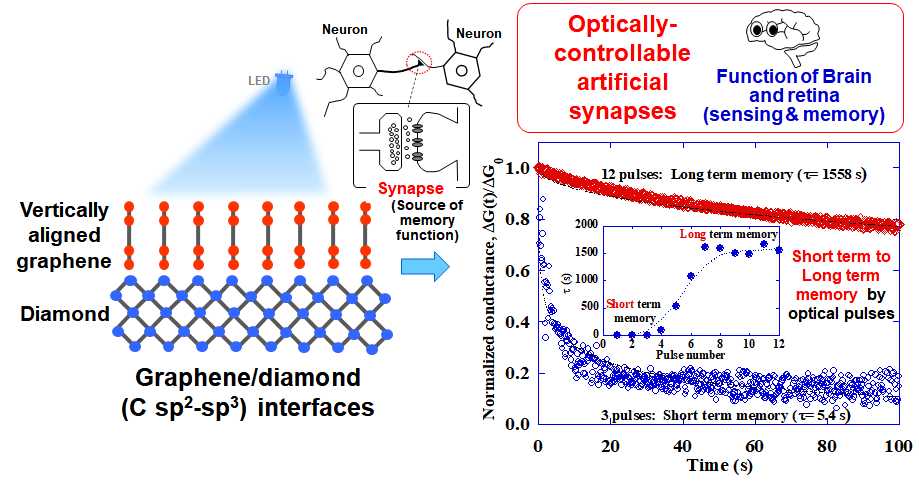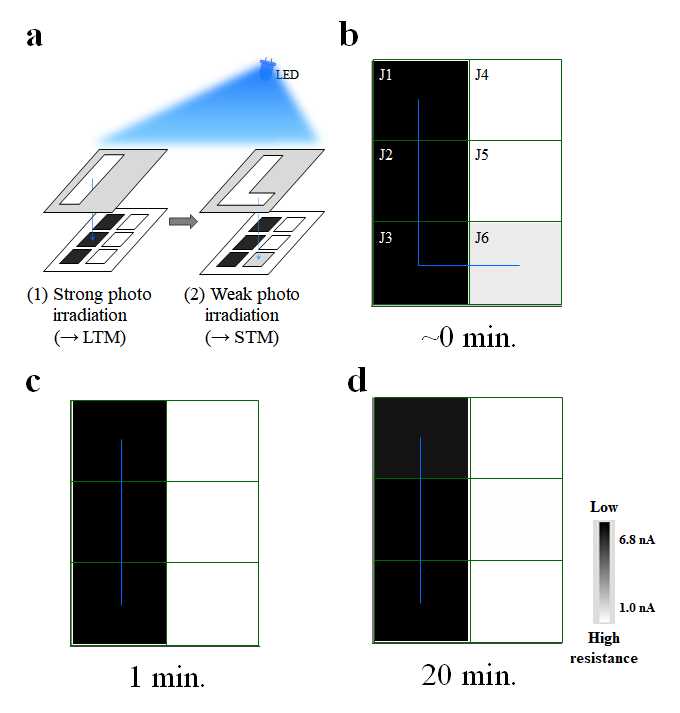・ Brain mimic optoelectronic memory functions of diamond/graphene (C sp3-sp2) junctions
We newly found that diamond/graphene (C sp2-sp3)interfaces became brain-mimic optoelectronic devices,
which selectively memorize important information.
In human brain, detected information is screened depending on its importance by
tuning synaptic strength stronger (memorization) or weaker (loose of memory).
We newly found that vertically aligned graphene (VG)/diamond heterojunctions can function as optically-controllable synapses. They exhibit some of the basic functions of the human brain,
such as synaptic plasticity with a transition from short-term memory (STM) to long-term memory (LTM)
by pulse light irradiation (upper figures). Arrays fabricated from these junctions were found to
function as image sensors that could provide an optical memory function and selectively memorize
information depending on the relative importance of the data (bottom figures).
These results are expected to assist in the realization of neuromorphic optical computers
simulating human visual memory systems that are modulated by specific interests.
Details are shown in the following paper.
(Ref.: Y. Mizuno, Y. Ito, and K. Ueda, Carbon 182 (2021) 669)


Upper fig.: Brain-mimic optoelectronic properties of graphene/diamond junctions.
Bottom fig.: a-d:Photo detection and memory (image sensing) function of graphene/diamond arrays.